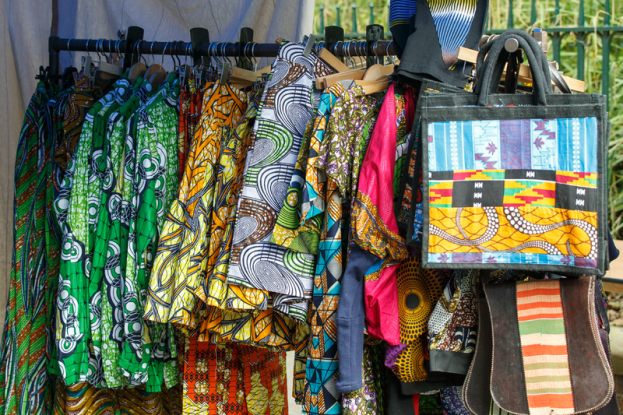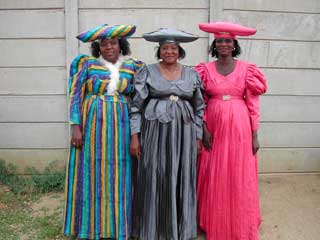It has been mentioned on this site before about how fascinating 19th century fashion is with its huge hoop skirts, tight corsets and pointed bodices. But what’s just as interesting is that in Namibia, these fashion still survive in the Herero tribe, who are known for their Victorian-style costume.
How Did These Fashions Get to Africa?
Although these outfits are often beautiful, the reasons they are being worn in Africa stem from the horrors of Europe’s involvement in Africa in the 1800s. Although the slave trade in Africa had ended by 1870, by that point the continent was split between Belgium, Britain, France, Germany, Italy, Portugal and Spain. After these countries destroyed traditional trade routes to build railways, many Africans had no choice but to make a living working for these Europeans in their mines and plantations.
With this colonization, European fashions began to enter Africa. This, combined with European missionaries entering the country meant that 19th century fashion began to appear on the continent.
African Traditions Meet European fashions  This was swiftly followed by African weavers and clothes makers making their own more traditional spins on these outfits. Shawls were an established part of 19th century fashion, providing extra modesty for women. European version would often start in one colour before going into a pattern at the bottom, with florals and paisley designs particularly popular. Egyptians weavers recreated these shawls in more traditional African designs. At first, they made what is called an aba, a male gown that is one of Africa’s most beautiful traditional fashions. Then they became more like the European modesty shawls for women.
This was swiftly followed by African weavers and clothes makers making their own more traditional spins on these outfits. Shawls were an established part of 19th century fashion, providing extra modesty for women. European version would often start in one colour before going into a pattern at the bottom, with florals and paisley designs particularly popular. Egyptians weavers recreated these shawls in more traditional African designs. At first, they made what is called an aba, a male gown that is one of Africa’s most beautiful traditional fashions. Then they became more like the European modesty shawls for women.
From the Nineteenth Century to Now

It is these garments that are part of the signature look of the Hereros. Though there have been some changes to it in the last 200 years, like it now being made out of rayon and other artificial fibers rather than cotton and silk, it is still essentially the same garment as worn by German missionaries’ wives, landing in Africa in the mid-to-late 19th century. Combine that with these Namibian women’s’ love of layers petticoats and full skirts and you have a tribe who have reclaimed a traumatic time by making their colonizer’s fashions their own.

This guest post was provided to you by Jackie Edwards, who specializes in African fashion and writes for: http://www.africaranking.com/10-most-beautiful-traditional-african-fashions/
 Hi! My name is Geerte, I'm a researcher of Nineteenth century history from the Netherlands. This blog is where I write about my favourite subject. Feel free to browse around!
Hi! My name is Geerte, I'm a researcher of Nineteenth century history from the Netherlands. This blog is where I write about my favourite subject. Feel free to browse around!
Hi, I’m doing a project on victorians foods and diets and I saw an blog post you did on it in 2008, I came to the home page to see if you still did this and you do! It’s amazing that you have so much to write about and your website helps so many people, thanks!